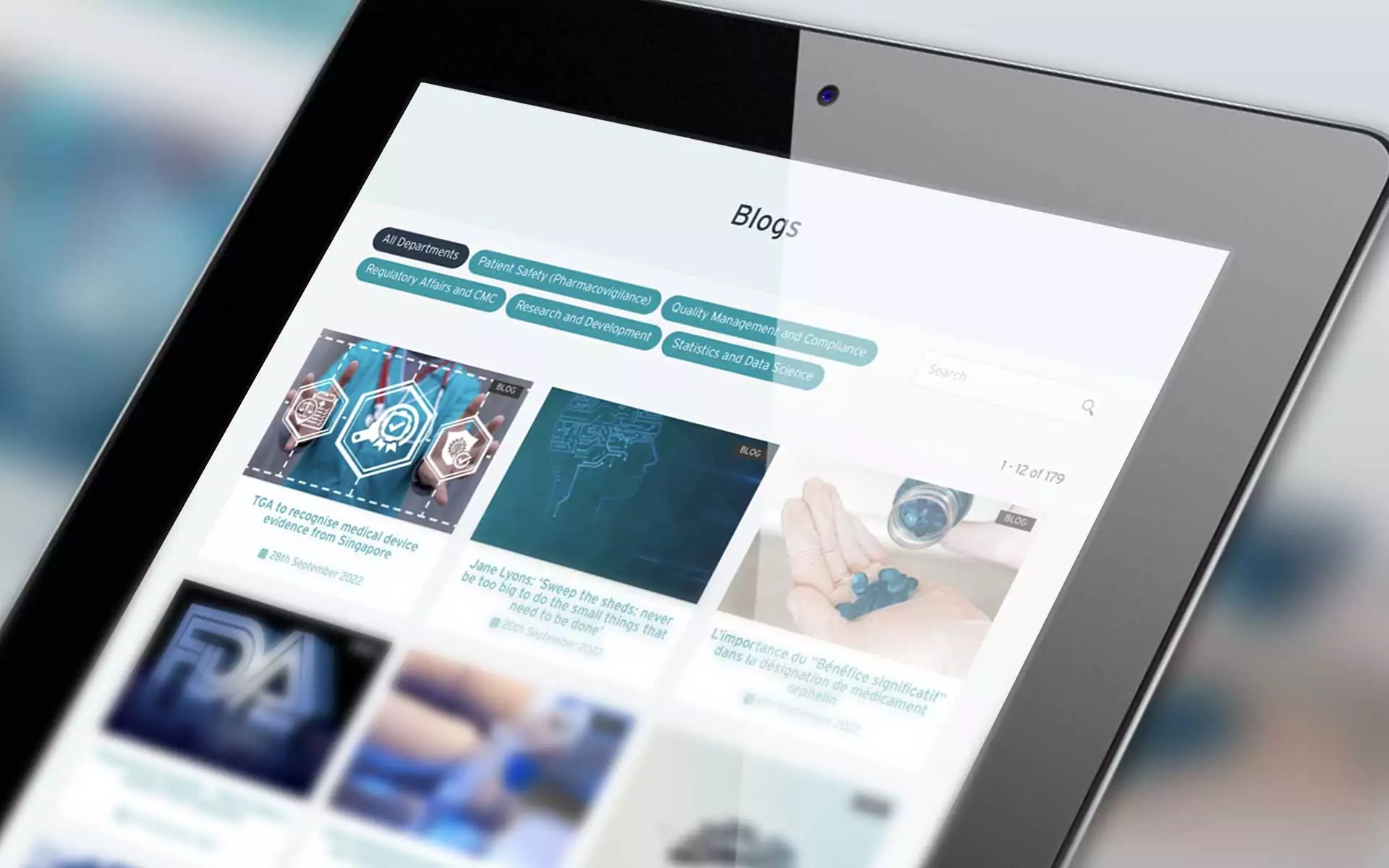Five critical things you need to know to enter the European market
For US pharmaceutical companies looking to diversify their market presence, spread financial risk, and build access to their portfolio, the European market has major potential. Not only does Europe have a large and diverse population, it also has robust national healthcare systems with governments investing significantly in healthcare infrastructure and services.
The EU represents 27 countries, and it shares trade access with three other countries that are part of the European Economic Area (EEA) – Norway, Iceland, and Lichtenstein. In addition, Switzerland and the United Kingdom represent two significant European markets with separate regulatory approval processes.
According to some estimates, the European pharmaceutical market is expected to reach US$488 billion by 2030[i]. This market offers substantial growth opportunities, driven by factors such as increasing healthcare expenditure, an aging population, and advancements in drug development.
To take advantage of this important marketplace, sponsors from the United States and other markets need a clear understanding of what is required to launch and commercialize their products in Europe. The European market is very different from the United States. To realize commercialization success, sponsors will need to plan early, have a clear strategy, know what is required, and build strong partnerships.
While there are many steps and considerations along the way, the following are five key things you need to know before entering the European market.
- Europe’s regulatory pathways
The European Medicines Agency (EMA) offers different regulatory pathways for marketing authorization: the centralized procedure for all member states (and mandatory for certain product types and indications) and the decentralized procedure (DCP) and mutual recognition procedure (MRP) for a select subset of member states.
Europe at a glance
- The EU comprises 27 countries, plus 3 EEA countries that share trade access (Norway, Iceland and Lichtenstein)
- The United Kingdom and Switzerland are important European markets that are not part of the EU or EEA
- EU population: 448 million
- More than one fifth of the population is aged 65 or older
5 common commercialization errors in the European market
- Legal entity is not established before MA application
- Thinking that the UK and Switzerland are part of EU or the European Economic Area
- Underestimating local differences and requirements for launch in EU member states
- Underestimating local differences and requirements for launch in EU member states
- Forgetting about supply chain licensing for products imported into Europe
iDespite the centralized approval process, navigating the diverse regulatory requirements and healthcare systems of individual European countries can be complex and time-consuming.
One area where these differences are most notable is with promotional materials. In addition to a European directive that establishes requirements with regards to product promotion[ii], there are also national codes that need to be adhered to when developing local promotional materials, and sign-off is required by a local market representative, who has been nominated by the company to the local authorities. The requirements vary depending on the market, for example, an Exploitant is required in France and an information officer is required in Germany.
It is also important to note that Switzerland and the United Kingdom are not included in this centralized approval. Swissmedic and the Medicines and Healthcare products Regulatory Agency (MHRA) have their own marketing authorizations. The UK’s MHRA offers faster processes for sponsors with approval from reference regulators, including the EMA and the Food and Drug Administration (FDA) through the International Recognition Procedure[iii].
To apply for marketing authorization in the EU, UK or Switzerland, the applicant needs a legal entity in the respective region or country.
The FDA and EMA do have joint working groups to share information and collaborate on development and regulation. However, while the agencies are aligned on a majority of marketing authorization decisions, they can and do diverge where there are differences in conclusions about efficacy[iv].
2. The critical role of the MAH
For each of the main European markets (EU, UK, and Switzerland) pharmaceutical companies need to submit individual applications to achieve marketing authorization for those markets and become the marketing authorization holder (MAH), which is equivalent to the US New Drug Application (NDA) holder or Biologics Licence Application (BLA) holder.
However, the obligations that fall on the MAH are much more stringent than their US counterparts. In Europe, the legal entity (the MAH) has many legal obligations, particularly with respect to product quality and safety. The EU MAH, similar to those in the UK and Switzerland, must name a qualified person (QP), who is responsible for ensuring a batch of a product has been certified[v].
The MAH must also appoint an EU qualified person for pharmacovigilance (QPPV), who is responsible for the MAH’s pharmacovigilance system and has broad responsibility for safety oversight[vi].
Among the MAH’s many obligations are:
- Qualification and oversight of the pharmaceutical supply chain
- Labelling and packaging control
- Effective handling of complaints, quality defects and recalls
- Control of responsible pharmaceutical advertising and promotion (strictly controlled in the EU with additional country-specific requirements)
- Continuity of marketed product supply
- Reporting of suspected falsified medicines entering the legitimate supply chain
- Control of clinical trials/studies (pre and post marketing)
- Maintenance of the MA and ensuring ongoing compliance with the terms of the MA
All legal requirements of the MAH must be reflected in the quality management system.
3. Engagement with the regulators
All regulators in Europe encourage sponsors to consult early on their development programs. The EMA offers medicine developers scientific advice and protocol assistance through the Committee for Medicinal Products for Human Use (CHMP)[vii]. This can help streamline approval timelines and prevent compliance issues later in the process by ensuring developers understand what the regulators expect of them.
The regulators are particularly interested in innovative products and those that address unmet medical needs. There are several regulatory pathways open to developers of innovative products, in particular for micro, small and medium sized enterprises (SMEs), which tend to have more limited knowledge of regulatory processes. Among the pathways EMA offers are:
- The SME office, which offers guidance to small innovators[viii]
- The Innovation Task Force, which offers early dialogue to developers of innovative medicines[ix]
- The PRIME scheme, which offers enhanced interaction and early dialogue with developers of promising medicines[x]
For its part, the UK offers several pathways for innovators, including the Innovative Licensing and Access Pathway (ILAP)[xi].
Some countries within the EU have early access programs for innovative products, and, in some cases, companies can receive reimbursement from these early access programs. Most notable are dedicated programs in France, which can allow certain products to be used, and reimbursed for, on the market even before official approval[xi]. This is open to developers of products that meet an unmet medical need or that have developed a breakthrough therapy. Applications to local authorities are mandatory and approval is needed.
While these programs can offer huge benefits to some developers, it is important to understand the requirements and to adopt a strategic approach to move forward. These programs can have an impact on future market access, as well as pricing and reimbursement considerations.
4. A complex reimbursement ecosystem
With 27 countries, each with their own health technology assessment (HTA) processes, the reimbursement environment in the EU is challenging.
Further complicating this journey for US and other non-European developers is the multifaceted nature of the HTA landscape. Under the HTA regulation (HTAR), the European Commission is seeking to accelerate innovation, improve transparency, and drive equality in terms of patient access across the EU.
The HTAR has two key instruments: the Joint Clinical Assessment (JCA) and the Joint Scientific Consultation (JSC)[xii]. The goal behind the JCA is to do away with duplicative assessments across the 27 member states plus Norway. The JCA is an analysis that is prepared by the health technology developer (the sponsor company) and assessed by the HTA bodies.
While the JCA process will evaluate the degree of certainty of the relative effectiveness and relative safety of a product, pricing and reimbursement processes remain the full responsibility of the individual member states. However, it is expected that HTA bodies will give due consideration to the conclusions of the JCA, and it is therefore likely to influence local processes and decision-making.
Oncology products and advanced therapy medicinal products (ATMPs) have been included in the JCA since January this year. From 2028, orphan drugs will be included and from 2030, it will be mandatory for all newly registered products in Europe[xiii].
While the JCA is largely welcomed by industry, sponsors must still navigate Europe’s heterogenous pricing environment, where each country determines what they consider value for money.
5. Managing logistics and the supply chain
To enter the EU, companies need not just an approved marketing authorization but also a licensed supply chain, including authorizations for importation, batch release, and distribution. Unlike in the US, where wholesale drug distribution regulations differ across states, the EU has a unified framework, making compliance an essential factor for market success.
Pharmaceutical companies must ensure that their supply chain is fully licensed and compliant with EU regulations. This includes obtaining Good Distribution Practice (GDP) certification[xix] and ensuring that all logistics partners meet the necessary regulatory requirements.
If a product is not manufactured in Europe, the sponsor must ensure they have the correct importation licenses and that their 3PL vendor has the correct authorization. A QP is required to release a batch of medicinal product to the EU market and must be named on a Manufacturing and Import Authorization (MIA).
These requirements are often misunderstood or completely overlooked by non-EU sponsors, leading to non-compliance with the regulations, possible risk to the quality, safety and efficacy of medicinal products supplied, and even a risk to business continuity.
Summary: Breaking down silos
While there are many processes involved in commercializing a product in Europe, there are interdependencies between each of these steps. It is therefore important that sponsors eager to enter the European market avoid working in silos. They need to look at the whole picture to successfully commercialize their products and help their breakthroughs break through.
Having a partner who can support the commercialization strategy and launch plan across regulatory, quality and safety, importation, 3PL, reimbursement and beyond can help to streamline the process. Learn more by joining the webinar, to be held on May 21, 2025, that will explore the roadmap to product launch and commercialization in Europe.
About the authors:
Marie-Charlotte von Brevern is Senior Director at PharmaLex, working for more than 25 years in the pharmaceutical and biotech industry. She has broad experience from R&D and clinical trials to supporting large pharma and biotech organizations in Regulatory affairs and Program Management. Today Marie-Charlotte supports clients globally to understand the necessary steps and investments for their successful market entry and to build the optimal path to launch in their target markets.
Eva Keck is Vice President at PharmaLex. She has more than 20 years of experience in the pharmaceutical and biotechnology industry. Eva has worked at all levels – from operational product management, launching multiple products in the EU for pharmaceutical companies during her time at large pharma and biotech organizations. Today, Eva supports clients globally who are looking to enter key target markets to successfully launch and commercialize products.
Disclaimer:
The information provided in this article does not constitute legal advice. PharmaLex and its parent Cencora, Inc. strongly encourage the audience to review available information related to the topics discussed in this article and to rely on their own experience and expertise in making decisions related thereto.
[1] Europe Pharmaceutical Market Size & Outlook, 2024-2030, Grand Review Research. https://www.grandviewresearch.com/horizon/outlook/pharmaceutical-market/europe
[2] Directive 2001/83/EC of the European Parliament and the Council of 6 November 2001 on the Community code relating to medicinal products for human use. https://eur-lex.europa.eu/LexUriServ/LexUriServ.do?uri=CONSLEG:2001L0083:20121116:EN:PDF
[3] International Recognition Procedure, MHRA, Aug 2024.
[4] EMA/FDA analysis shows high degree of alignment in marketing application decisions between EU and US, 2019. https://www.ema.europa.eu/en/news/ema-fda-analysis-shows-high-degree-alignment-marketing-application-decisions-between-eu-and-us
[5] Reflection paper on Good Manufacturing Practice and Marketing Authorisation Holders, EMA. https://www.ema.europa.eu/en/documents/scientific-guideline/reflection-paper-good-manufacturing-practice-and-marketing-authorisation-holders_en.pdf
[6] Guideline on good pharmacovigilance practices (GVP), HMA and EMA. https://www.ema.europa.eu/en/documents/scientific-guideline/guideline-good-pharmacovigilance-practices-module-i-pharmacovigilance-systems-and-their-quality-systems_en.pdf
[7] Scientific advice and protocol assistance, EMA. https://www.ema.europa.eu/en/human-regulatory-overview/research-development/scientific-advice-protocol-assistance
[8] Support to SMEs. https://www.ema.europa.eu/en/about-us/support-smes
[9] Supporting innovation, EMA. https://www.ema.europa.eu/en/human-regulatory-overview/research-development/supporting-innovation
[10] PRIME: priority medicines, EMA. https://www.ema.europa.eu/en/human-regulatory-overview/research-development/prime-priority-medicines
[11] Innovative Licensing and Access Pathway (ILAP), https://www.gov.uk/government/publications/innovative-licensing-and-access-pathway-ilap#:~:text=The%20ILAP%20is%20a%20unique,MHRA)%2C%20the%20UK%20health%20technology
[12] Early access authorisation : a positive initial report and refined assessment methods, HAS. https://www.has-sante.fr/jcms/p_3340090/en/early-access-authorisation-a-positive-initial-report-and-refined-assessment-methods
[13] Joint Clinical Assessments, European Commission. https://health.ec.europa.eu/health-technology-assessment/implementation-regulation-health-technology-assessment/joint-clinical-assessments_en
[14] Guidelines of 5 November 2013 on Good Distribution Practice of medicinal products for human use Text with EEA relevance, European Union. https://eur-lex.europa.eu/legal-content/EN/TXT/?uri=oj:JOC_2013_343_R_0001_01







